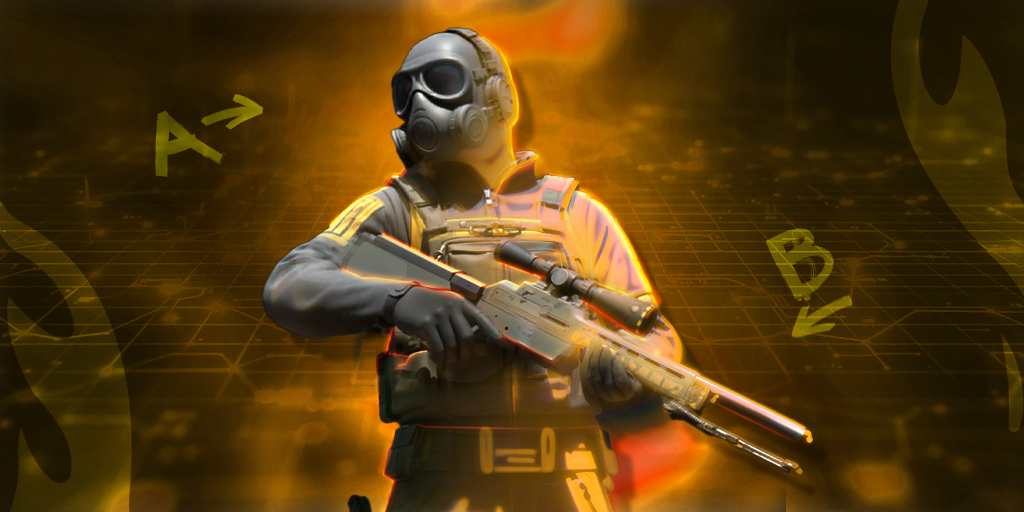The economy system is one of the core features of Counter-Strike. From CS 1.6 to CS:GO, it has evolved over several generations into its current form. Despite the switch from MR15 in CS:GO to MR12 in CS2, Valve has shown no intention of adjusting the economy system. Therefore, the economy system in CS2 remains the same as it was in CS:GO.
Introducing the CS2 economy system
Starting amount: $800
Round win bonus: $3,250
Round win with C4 exploded (T-side): $3,500
Round win with C4 defused (CT-side): $3,500
First losing round bonus: $1,400
Lost streak bonus (starting from losing two consecutive rounds): $1,900/2,400/2,900/3,400
How the economy affects team buying tactics
In our previous article, we discussed the basic roles and tactics of a team, but there is another key factor that affects player positioning and item choices: the economy system. In each round, both teams adjust their tactics, allocate utilities, and position their players accordingly.
For example, at the start of each half, each player has only $800, limiting them to purchasing pistols. Popular choices include the P250 ($300) for the T side and Dual Berettas ($300) for the CT side. Some players may also invest in utilities or a Kevlar vest ($650). This round is commonly referred to as the “pistol round.” Winning the pistol round grants a significant economic advantage, often securing the winning team two additional rounds and a 3-0 lead at the start of the game.
After the pistol round, teams transition into either an eco round or a full buy round. The basic tactics we covered in the previous article typically assume that players can go full buy in that round. A full buy round means that players can afford rifles or an AWP as their primary weapon, along with a Kevlar vest and a helmet, plus 3-4 utility items. Full buy rounds are usually pivotal in a game because if a team loses during a full buy round, they will often lack sufficient funds for the next round and may be forced into an eco round.
There are usually three types of eco rounds: full eco, semi-buy, and force buy. Regardless of the type, teams in an eco round will be at a disadvantage in weapons and utilities compared to their full buy opponents. They need to manage their economy through eco rounds to prepare for the next full buy opportunity. The momentum of intense CS2 matches is often driven by the economy system, allowing us to see the teams’ strategies unfold across different rounds. In some pivotal rounds, we see teams heavily invest in utilities. Regardless of side, utilities can enable teams to win the round within seconds if they execute their tactics perfectly.
How teams utilize utilities in execution and defense
The most common utility tactic that even casual players learn and use in-game is the T-side execute. Execute refers to an attack strategy heavily reliant on utility use and planning. For example, popular executes on sites like Mirage A, Nuke A and Ancient B involve using smoke grenades and molotovs to block enemy vision and take control of key areas, followed by flashbangs and player engagements to secure the site. This is a standard execution tactic on the T side.
However, as the Terrorists attempt to secure the bomb site and plant the C4, the CTs aren't just standing by. CT players also deploy their utilities to delay or counter the terrorists’ advance. Beyond just using grenades, players often engage in gunfights during a T-side execution, making these moments crucial for determining the outcome of the round.
In addition to executes, pro teams use utilities strategically to gain map control. Sometimes, lurkers on the opposite side of the map will use their utilities to perform a fake execute to distract opponents. Unlike in CS:GO, utilities in CS2 can be dropped and shared among teammates, offering flexibility in utility usage.
Pro teams often drop utilities at specific points on the map so that players can deploy multiple grenades at once when the attack site and strategy are decided. This tactic can also be used as a fake engagement, misleading CTs about the number of attackers based on the volume of utilities thrown.
Whether to win gunfights, execute attack tactics, or counter engagements, utility usage is one of the most crucial skills in CS2 matches. Pro teams typically spend time exploring different grenade lineups across maps and practicing their throws.
Channels to follow CS2 tournament information
In the packed schedule of CS2 tournaments, how can we, as the audience, keep up with the latest tournament information? Personally, I often browse HLTV and Liquipedia for tournament updates. They offer live coverage of ongoing events and display the schedule for all upcoming ones. The HLTV match page even provides links to various streaming platforms, which is a great feature for fans speaking different languages.
For news on the CS2 pro scene, tournament formats, player and team information, or past tournament results, these two websites are the go-to sources. HLTV has an extensive database, recording tournament results and player information from CS 1.6 to the present. You can also follow tournament organizers, pro teams, and players on X (formerly Twitter) to stay updated with the latest CS2 news on social media.


